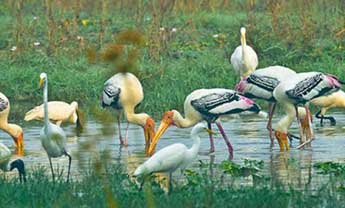
Keoladeo Ghana National Park, Bharatpur
The rich aquatic plant and animal life in the shallow, freshwater marsh of Bharatpur has been attracting resident and migratory aquatic birds in thousands since times immemorial. It has a recorded history of 100 years of duck shoots. There are 374 species belonging to 56 families, within the 29 sq km area of the National Park. The Siberian cranes visit no other waters in India except the marshes of Kéoladeo. Its easy accessibility from Delhi, Agra and Jaipur, both by road and rail, and a comfortable stay at the RTDC Hotel Saras makes Keoladeo a popular destination for bird watchers and wildlife enthusiasts.
Ranthambhor National Park
History and Natural History blend in right proportion in the Ranthambhor National Park, a famous tiger reserve under the PrOject Tiger. Here sambar, chital, chinkara, nilgai, wild boar and common langur provide a good spectrum of prey range for the resident 'tigers and their coperdators, leopards and jackals. Sloth-bear and hyena, also live in the 392 sq km of unique habitat of dry deciduous forests. The wildlife paradise is 180 km by road and 132 km by rail from Jaipur and approachable both by rail and road. It is situated 14 km from Sawai Modhopur, a railhead on Delhi-Bombay trunk route. RTDC Castle Jhoomar Baori, RTDC Hotel Kamdhenu, Maharaja's Lodge, PWD Rest House, Railway Retiring ROoms at Sawai Madhopur are available on advance notice.
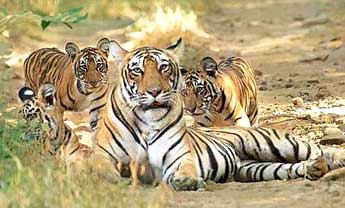
Sariska Tiger Reserve
It is the nearest tiger-land from Delhi (190' km). The landscape of Sariska is dominated by sharp cliffs of hills and narrow valleys of the Arvallis. The forests are dry deciduous, sometimes 'more deciduous and dry than the words mean. The grassy 'glades and woodland covers are excellent, niches of the prey species, sambar, chital, nilgai, four-horned antelope, wild boar and common langur, tiger, common leopard and their followers jackal, hyena and jungle cat. Porcupines, purely nocturnal rodents, are conspicuous after dark. One can count 200 peafowls at Kalighati any day. The sanctuary combines relics of early and mediaeval history. The ruins of temples of Garh-Rajor of the 10th and .11th centuries, are the treasures scattered in the jungle. A castle on a sharp hill top at Kankwari reminds of the slow and peace loving past of the 17th century. It also provides a top view of flying Egyptian vultures and eagles. It is on the regular bus route from Alwar to Jaipur. RTDC Hotel Tiger Den, Sariska Palace Hotel and RTDC. Siliserh Palace Hotel provide all comforts for stay; and transport is provided for viewing wildlife. Specially designed hide-outs provide an opportunity to meet wildlife at its best.

Desert National Park
A vast land of 3,000 sq km with natural vegetation and its fauna and unobstructed horizons on all sides, still exist only 30 km from Jaisalmer. The sanctuary harbours thousands of sparrows, imperial sand-grouse, demoiselle cranes, the lesser bustard and their predators, eagles, falcons and harriers who come in winter and return in summer. RTDC Hotel Moomal at Jaisalmer provides a comfortable accommodation. Also a range of other accommodation.
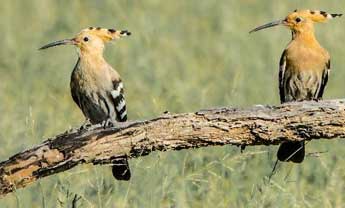
Tal Chhapar Sanctuary
Over a thousand black bucks, deer and fawns in saline, flat land, sometimes reflecting their images in a distant lake, is an optical illusion. The lake that appears is mirage but the black bucks are a reality. The natural home of the, bucks is on the desert sojourn about 200 km from Jaipur on way to Bikanér. Co'mfortable stay at Hotel Dhola Maru at Bikaner or Hotel Haveli at Fatehpur-Shekhawati.
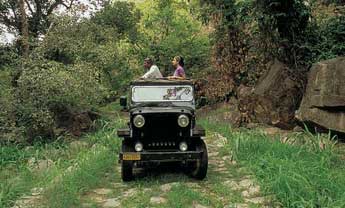
Kumbhalgarh Sanctuary
It is perhaps the only sanctuary where Indian wolf is breeding successfully. Kumbhalgarh, the famous historic fort of Mewar and Ranakpur, the Jain temple of breathtaking carvings are other places of interest in the sanctuary, about 20 km from Udaipur: Nearest place to stay is the Gokul Tourist Bungalow, Nathdwara or the Shilpi Tourist Bungalow, Ranakpur. RTDC Hotel Shikhar, Circuit House, PWD Rest House and many private lodges provide comfortable stay.
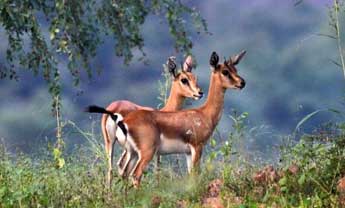
jai Samand Sanctuary
The man-made lake spreading over 160 sq km was once the biggest water body of the region. It holds a sizeable population of crocodiles and enormous quantity of fish. The chital, chinkara, wild boar and variety of birds live in open forests of the adjoining hills. Common leopards also form part of the fauna of the sanctuary. It is a day's excursion (45 km) from Udaipur. Stay at Tourist Bungalow at Jai Samand.
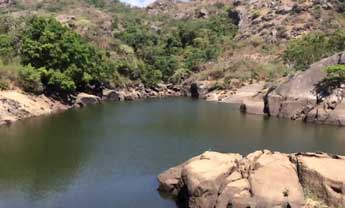
Mt. Abu Sanctuary
Mt. Abu is 185 km from Udaipur. It is the highest hill between the Nilgiris and the Himalayas. Trekking in its sub-tropical climate through rounded rocks is an experience, specially when Mt. Abu is festive in March and April with red flowers of Dhák'and Erythrina.
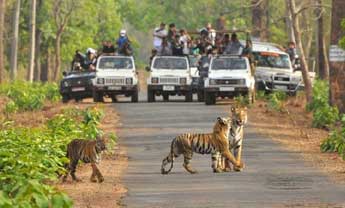
Sitamata Sanctuary
The 500 sq km of the miscellaneous forests of Pratapgarh have been reserved to save the remaining wildlife, four-horned antelope, chinkara, sambar, wild boar, common langur and their predator, the common leopard, in the Bhil (tribal) region. The sanctuary is situated 200 km from Udaipur. Stay at Dhariywad Castle and PWD Dak Bungalow, Pratapgarh.
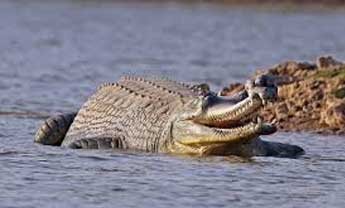
National Gavial Sanctuary
The Chambal waters are unpolluted and hold a promise for revival of the Gangetic gavial. The whole length of the river from Rana Pratapsagar to its confluence with the Jamuna is a sanctuary. The gavials nest and bask in the winter sun on shores of deep river pools. .These can be seen from boats. Stay at RTDC Hotel Chambal at Kota.
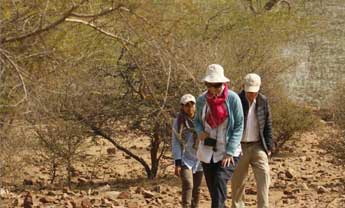
Van Vihar, Ramsagar and Darrah
The relics of the shooting lodges of the Mughal at Ban, 60 km from Agra are still visible at Talab-e-Shahi in the Van Vihar and Ramgarh Wildlife Sanctuaries. The chinkara, nilgai and sambar can be seen here. The Forest Rest House on a lake is a miniature palace. Darrah is a wildlife sanctuary in the Hadoti Tourist Circuit only 60 km from Kota. At Kta, stay at RTDC Hotel Chambal.
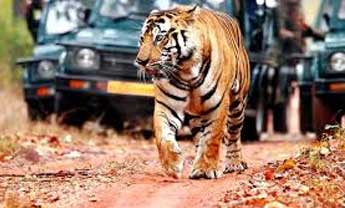




Rajasthan's beautiful forests and valleys are as famed as its desert. The Aravalli Range divides the desert in two. To the west "Maroodesh"-the desert land, to the east "the land where the yellow aonla blooms"—green, fertile, dotted with lakes, thickly wooded, and through which the beautiful river Chambal flows. The jungles are alive with tigers, leopards, wild bears and many types of deer, as nilgai, sambhar, black-buck, cheetal, chinkara. The lakes dotted with water-birds and ducks. One of the nature's wonderlands is Keoladeo Ghana—a low-lying marsh-land which each year is flooded during the monsoon and becomes a vast lake. On the water float the tops of spreading thorny babul trees. Here on these natural spring mattresses gather thousands of water-fowls for the breeding season.
After the intense heat of summer, the monsoon comes and the first rains fall, the withered desert blooms. The jungles are green, peacocks dance under every tree, the Koel calls in the mango-groves and the village well is surrounded by girls in their swinging skirts, four earthen pots balanced on their heads, singing to the passing birds to take their message of love and hope to their distant lover.